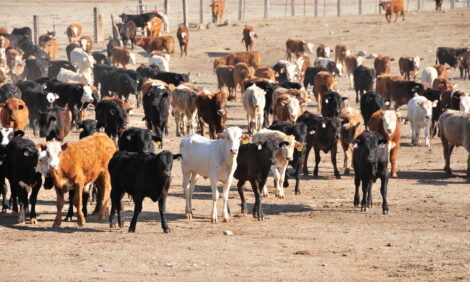



Opportunities for Milk Protein Concentrates
US - What began as a product whose main feature was a loophole in the US import tariff schedule has turned into an ingredient where US milk can deliver nutritional value, taste and broad functionality. Milk protein concentrates (MPCs) are being used in everything from yogurt to dry macaroni-and-cheese mixes to medical nutrition products, says the US Dairy Export Council (USDEC).“Globally, the MPC and milk protein isolate (MPI) markets are growing, vibrant and dominated in volume and value by higher protein concentrations,” says Véronique Lagrange, USDEC senior vice president, strategy and insights.
At the same time, MPC is notoriously difficult to track. Few countries provide official production data and trade takes place under a variety of tariff codes.
USDEC’s new study on the sector, MPC Market 2012: Production, Markets & Manufacturers, was meant to provide insight into production, consumption and trade. It found significant opportunities for US MPC manufacturers, starting with import displacement.
Oceania is the largest manufacturer of MPCs, responsible for 87,000-92,000 tons, or a little more than half the total annual supply. The United States at 49,000-55,000 tons and the EU at 21,000-25,000 tons follow.
The United States is both the single largest MPC user in the world and the largest importer. In 2011, it utilised 79,000 tons and imported 57,000 tons. While imports have been trending downward, this year they rose through May. Utilisation is growing.
“In general, we are beginning to supply more of our own MPC and that supply is expanding primarily due to MPC’s characteristics,” says Ms Lagrange.
“On-the-rise product categories like medical nutrition are growth outlets because taste is such a large component of success. Seniors and especially people who are sick don’t want something that tastes bad, and casein-based products can taste like glue. With MPCs, you not only achieve a clean taste, but good solubility, good shelflife and good suspension.”
Nutrition products represent 30-40 per cent of MPC demand, while dairy products, like yogurt and processed cheese, account for slightly more than half.
Such products are not just in demand in the United States. South Korea is the No. 2 MPC importer in the world, and China, Japan, the Middle East and Southeast Asia are significant buyers.
“The United States holds an advantage over New Zealand in serving these foreign markets,” says Ms Lagrange. “Kiwi domestic MPC production is highly seasonal, whereas we can make MPCs all year long.”
Volume rising
Global MPC production quadrupled to 184,000 tons from 2000-2011. Production begat research and utilization, which encouraged greater production.
The product has a lot going for it, facing few regulations and favorable tariff classifications and labeling rules in most markets.
The USDEC study predicts significant growth through the end of the decade to satisfy rising demand, led by another 40,000 tons from Europe.
Initiatives are in the works that could facilitate US expansion as well. USDEC is working with American Dairy Products Institute on an initiative that may include developing industry standards for US products as well as recommended methods of analysis. USDEC is also involved with efforts by the Innovation Center for US Dairy, which is funded by the checkoff, to secure GRAS status for MPC and MPI, which could come by the end of 2012.
TheCattleSite News Desk


